

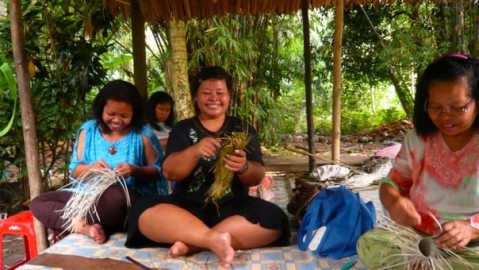 Ladies from the weaving cooperative.
Ladies from the weaving cooperative.
(Photos by Lisa Watts, unless otherwise noted)
I spent my Malayan Merdeka Day somewhat unconventionally by taking an Australian friend to visit the Hma’ Meri (Mah Meri) community in Pulau Carey, off the Selangor coast. As someone involved in an Aboriginal land handback programme she was particularly keen to see the situation of indigenous peoples in Malaysia.
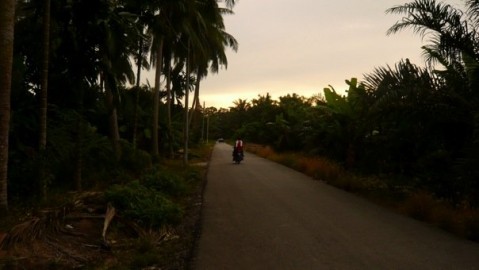
In Pulau Carey inequalities of rights to land and self-governance have impacted the capacity of the Hma’ Meri orang asli community to produce their weavings and carvings. Oil palm plantations have slowly encroached on their lands and, until recently, orang asli have had little political support to secure rights to their traditional lands.
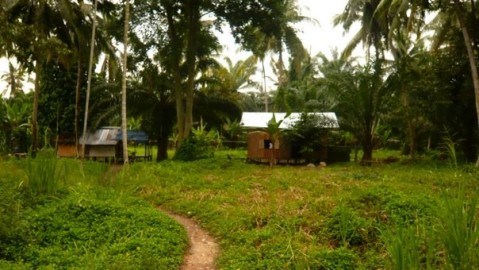
As soon as one crosses from the Selangor mainland to the island oil palm estates stretch as far as the eye can see. The only visible non-oil palm vegetation is a lonely hill to the south. After passing a golf course and plantation training centre one arrives at a turning to Kampung Sungai Bumbon.
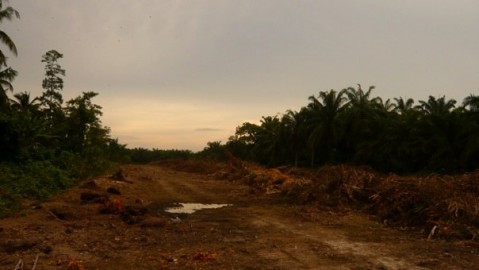 Freshly cleared land for oil palm on the village borders.
Freshly cleared land for oil palm on the village borders.
The extent of the village is small and the community is bracketed by fields newly cleared for oil palm. The mengkuang and pandan plants the craftswomen rely upon for their weaving have grown as scarce as the forests. The lustrous red nyireh batu hardwood used by men for wood carving have also become harder to find as the oil palm has encroached on the mangroves.

The ladies from the weaving cooperative were extremely curious to hear of the situation of Australian Aborigines from Lisa. They ‘ahh’-ed knowingly when she confirmed that alcoholism was a serious problem, a condition which stemmed from the early British practice of paying Aboriginal labourers in booze, food, and clothes rather than with cash. They were also shocked to hear of the kidnapping of Aboriginal children, combined with programmes to breed them over successive generations into whiteness. The plight of this ‘Lost Generation’ was depicted in the film Rabbit-Proof Fence (2002, Dir. Philip Noyce). The Hma’ Meri women observed that even though it was unjust to take their lands, to take their culture was an even worse fate.
Ever since seeing Roland Werner’s book on Hma’ Meri carvings over six years ago, I have been an admirer of their artforms. Hma’ Meri carvings are striking representations of spirits and stories, often used in healing processes. One unfinished carving of a Tupai-Belalang (squirrel-grasshopper) I saw in Pulau Carey was particularly beautiful and has a poignant tale attached.

Tupai-Belalang (Source: Mah Meri of Malaysia: art and culture by Roland Werner).
Tupai-Belalang appears as a squirrel with flaming grasshopper wings shooting upwards from its rear haunches. It represents unrequited love. The story goes that a man, heartbroken at being spurned by a woman, transformed himself into a squirrel so that his human heart might be spared the pain. As a squirrel he fell in love with a she-squirrel, only to be spurned again. He then crawled away under the boughs of a tree and wished himself dead to be free of the pain. From his bones a grasshopper sprang.
I do not know if the Hma’ Meri have a conception of higher and lower orders of the animal kingdom. Humans and squirrels certainly have feelings, but do insects? Does the grasshopper represent apotheosis and potential emancipation from pain or the implacable hold of emotions and desire that have an existence even beyond death? Perhaps the lesson of the tale is that running from emotional pain is no lasting solution, maybe one has to confront pain and master it rather than flee from it. In any case, the sculpture associated with it is beautiful, and is the work of Gali Adam, who has been featured in local news stories.
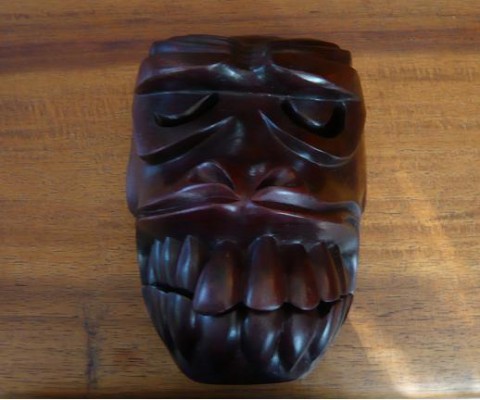 Tenung Jerat mask by Gali Adam. Carved from nyireh batu hardwood.
Tenung Jerat mask by Gali Adam. Carved from nyireh batu hardwood.
My companion, Lisa, acquired a Tenung Jerat mask from Gali. The mask was described as a ‘gazing snare’, presumably used to ensnare animals or perhaps other humans. Other forms of Tenung Jerat depict whole animals with an upside-down human suspended from the creature’s tongue. Tenung often seems to refer to a form of spirit attack, where a plant or animal takes human form. Sometimes the Tenung are hostile and at other times they manifest wishes.
Hma’ Meri carving has been celebrated for many decades now. Hossein Enas, a former Assistant Protector of Aborigines in the Selangor Orang Asli Department (Jabatan Orang Asli, now Jabatan Hal Ehwal Orang Asli, Orang Asli Affairs Department) who was also an artist, chose to promote Hma’ Meri carvings. They have subsequently become a source of income and tourism to benefit the community.
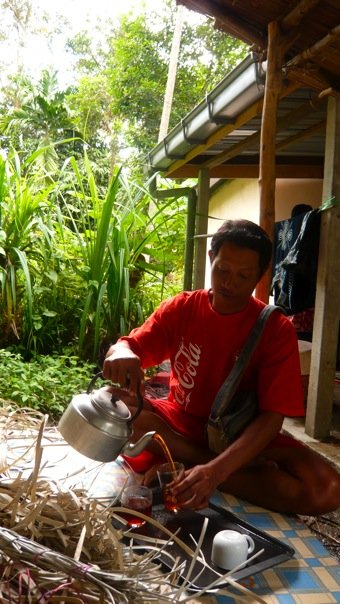
Gali Adam, carver.
The non-ritualistic carvings one encounters these days are typically carved from nyireh batu wood to enhance their aesthetic appeal to outsiders. Previously the rare tengkho wood was used and the carvings were often smaller in scale. Used for ceremonial purposes, these artifacts can still be seen in the village. I expect that they come out during the Ari’ Muyang (Ancestor Day) festival, which is held around March.
While some support has materialised for such commercial endeavours – in Kampung Sungai Bumbon one finds stylised carving huts located in front of homes – the erosion of land rights undermines the ability of craftspeople to continue their arts. As their forest is replaced by oil palm the plant species which supply their raw materials are vanishing. With no land, there are no materials, and no crafts.

It is worth taking a trip out to Pulau Carey. It provides a stark example of the pressures orang asli and their cultural practices face. According to filmmakers Ahmad Yazid and Lydia Lubon, who have been working on a documentary about the Hma’ Meri (NOTE: which needs financial support for post-production), a popular local expression to describe their plight is mentimun, which literally means to be ‘cucumbered’. The image it attempts to invoke is that of a cucumber smashed between two durians, where the orang asli are represented by the unfortunate vegetable, and the forces of private developers and unsympathetic government policies are the durians.

But the visitor will also encounter great warmth and welcome from the Hma’ Meri who are happy to talk about their lives, culture, and problems. And afterwords the seafood delights of Port Klang are but a short distance away.
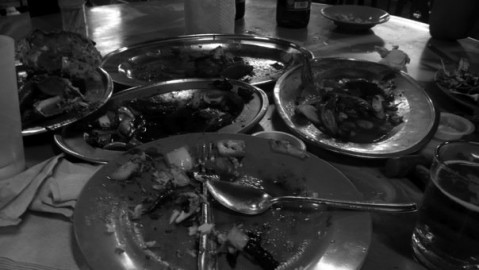 The aftermath of a Klang seafood dinner.
The aftermath of a Klang seafood dinner.
~
Those unable to make it Pulau Carey can still purchase Hma’ Meri products from the roving trading initiative Gerai Orang Asli, who can be found at the Annexe’s Art for Grabs and various malls around KL. Gerai also stocks literature on the Hma’ Meri and other orang asli, much of it published by the Centre for Orang Asli Concerns (COAC). Chita’ Hae (Our Story), edited by Reita Rahim (COAC, 2007), relates the culture, crafts and customs of the Hma’ Meri of Kampung Sungai Bumbon.
(YSL)
No comments yet.
Sorry, the comment form is closed at this time.